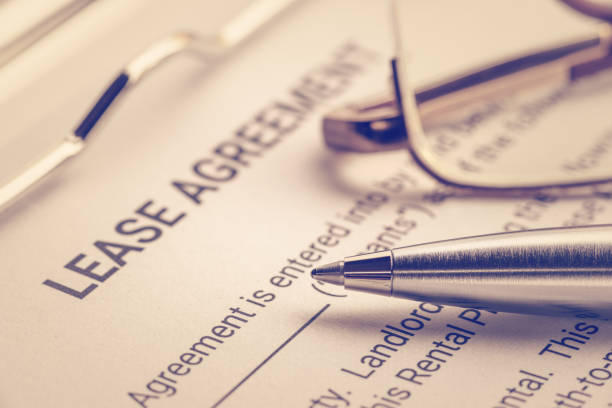Drafting a comprehensive lease agreement is crucial for landlords to establish clear expectations and protect their interests. However, many landlords make common mistakes during this process, which can lead to legal issues, disputes, and financial repercussions. In this article, we will explore the most common mistakes landlords make when drafting a lease agreement and provide practical ways to avoid these pitfalls. By understanding and implementing these strategies, landlords can create well-crafted lease agreements that foster positive landlord-tenant relationships and minimize potential risks.
Using Generic Templates without Customization
One common mistake landlords make is relying solely on generic lease agreement templates. These templates may not account for specific local laws and regulations. To avoid this mistake, landlords should research and find a reliable lease agreement template specific to their jurisdiction. Once obtained, it is important to customize the template to reflect their property and individual requirements. Consulting with a real estate attorney can help ensure compliance with local laws and provide guidance on necessary modifications.
Failure to Clearly Define Lease Terms
Ambiguity in lease terms can lead to disputes and misunderstandings between landlords and tenants. To avoid this mistake, landlords must clearly define essential lease terms in the agreement. These terms include the duration of the lease, rent amount and due date, security deposit details, pet policies, maintenance responsibilities, and property use rules. Precise language and thorough explanations should be used to avoid any confusion. Reviewing the lease agreement with a legal professional can help identify any potential areas of ambiguity and clarify them before finalizing the agreement.
Inadequate Property Description
An insufficient or inaccurate property description can create confusion and disputes down the line. Landlords should provide a detailed and accurate description of the rental property within the lease agreement. This includes the property address, specific unit number (if applicable), and any additional features or amenities provided. Including an inventory checklist or photographs can further support the property’s condition and contents. The property description should be thorough, leaving no room for misinterpretation.
Neglecting Maintenance and Repairs Provisions
Failing to address maintenance and repair responsibilities can lead to disagreements between landlords and tenants. Landlords should clearly outline the responsibilities of both parties regarding property upkeep and repairs. This includes specifying who is responsible for specific maintenance tasks, reporting repairs, and the timeline for addressing maintenance issues. By clearly defining these provisions in the lease agreement, landlords can avoid disputes and maintain a well-maintained property.
Omitting or Inadequate Disclosures
Landlords have legal obligations to provide certain disclosures to tenants. Failure to include these disclosures in the lease agreement can have legal consequences. It is essential for landlords to research and understand the specific disclosures required by local laws. Common examples include lead-based paint disclosures, mold or environmental hazard notifications, or information about registered sex offenders in the area. By including the necessary disclosures in the lease agreement, landlords fulfill their legal obligations and promote transparency.
Overlooking Rent Increase and Renewal Procedures
Neglecting to address rent increase and lease renewal procedures can create confusion and dissatisfaction. Landlords should clearly state the process for rent increases and lease renewals within the lease agreement. This includes defining how and when rent increases will be communicated, implemented, and the notice period required. Establishing guidelines for lease renewals, such as terms or conditions for renewal, provides clarity for both parties. By addressing these procedures in the lease agreement, landlords can prevent misunderstandings and maintain harmonious landlord-tenant relationships.
Neglecting Entry and Access Policies
Landlords must establish clear entry and access policies to respect tenant privacy rights. Failing to define the landlord’s right to enter the rental unit and the required notice period can lead to conflicts. It is crucial for landlords to understand and adhere to local laws regarding entry and access rights. Including these provisions in the lease agreement helps set expectations and ensures compliance with legal requirements.
Incomplete or Inadequate Lease Termination Procedures
Lease termination procedures that are not clearly defined can cause confusion and disputes. Landlords should include comprehensive provisions outlining the process for terminating the lease by either party. This includes specifying the notice period required, acceptable termination reasons, and any penalties or consequences for early termination. Clearly delineating these procedures in the lease agreement helps avoid misunderstandings and establishes a fair process for both parties.
Conclusion
By avoiding common mistakes when drafting a lease agreement, landlords can protect their interests and maintain positive landlord-tenant relationships. Customizing templates, clearly defining lease terms, providing accurate property descriptions, addressing maintenance and repair provisions, including necessary disclosures, establishing rent increase and renewal procedures, defining entry and access policies, and outlining lease termination procedures are crucial steps in creating a comprehensive lease agreement. Seeking legal advice and staying informed about local laws can further enhance the effectiveness of the lease agreement, ensuring a smooth and mutually beneficial rental experience.



